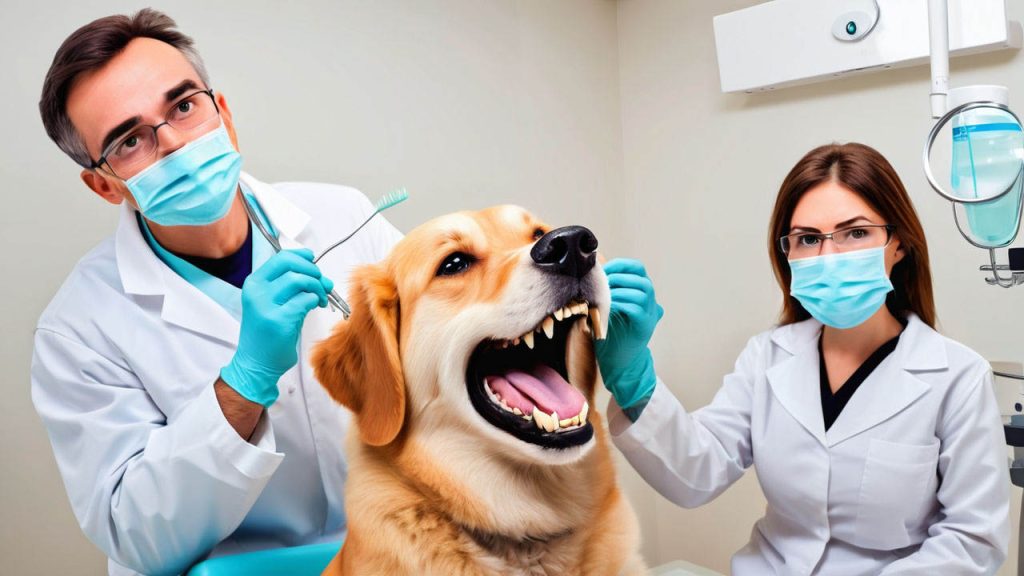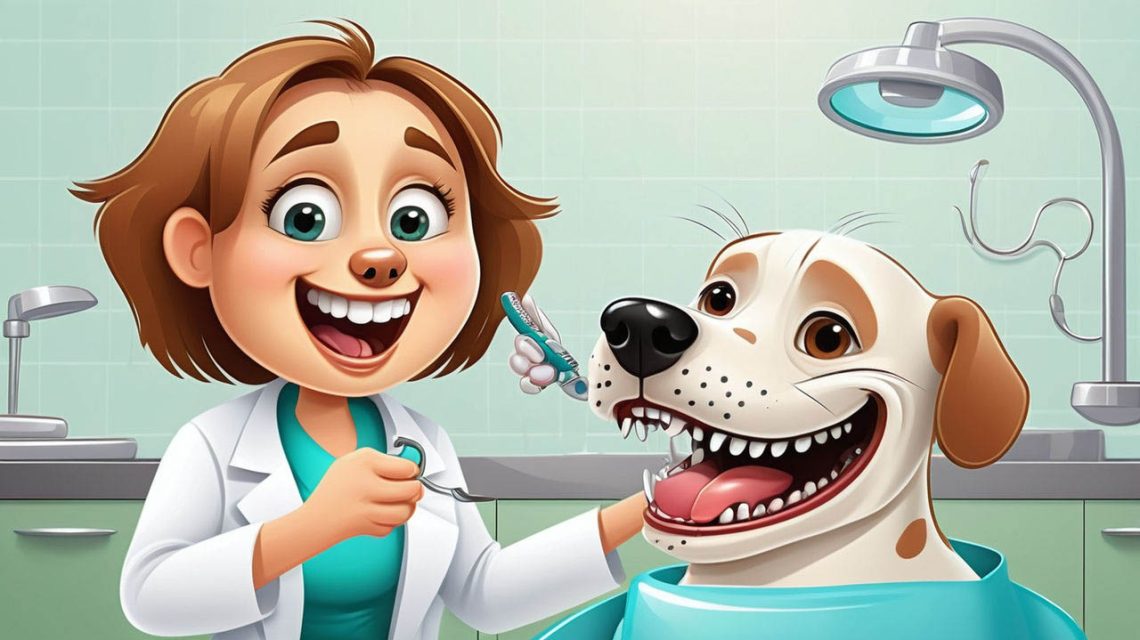Oral health is a crucial part of a dog’s overall well-being, yet it’s often overlooked. Dental issues like plaque, tartar buildup, and gum disease can cause pain and lead to serious health problems if left untreated. Dog dentistry involves more than just a yearly cleaning; it includes regular brushing, preventive care, and professional check-ups to maintain your dog’s dental health throughout their life.
In this guide, we’ll dive into the basics of dog dentistry, including why dental care matters, tips for preventive care at home, and signs that indicate your dog might need professional dental attention. By the end, you’ll have a clear understanding of how to keep your dog’s teeth healthy and pain-free.
Why Dog Dentistry is Important
Dental problems can affect a dog’s ability to eat, drink, and live comfortably. Without proper dental care, bacteria can spread from the mouth to other parts of the body, potentially causing infections and even impacting the heart, liver, and kidneys. Here’s why dog dentistry should be part of every pet care routine:
1. Prevents Painful Dental Issues
Conditions like gingivitis, tooth decay, and periodontal disease can cause significant pain. Regular dental care helps prevent these issues, reducing the likelihood that your dog will suffer from discomfort or loss of appetite due to oral pain.
2. Supports Long-Term Health
Keeping your dog’s mouth clean and healthy prevents bacteria from spreading into their bloodstream, which protects their organs and overall health. Research shows that dogs with good dental hygiene have a lower risk of developing serious health conditions later in life.
3. Improves Quality of Life
Healthy teeth and gums allow your dog to eat comfortably, chew toys, and enjoy their treats without pain or difficulty. A healthy mouth contributes to a happier, more energetic dog who can enjoy daily activities with ease.
Understanding Common Dog Dental Issues
Regular dental care helps prevent common oral problems that can cause discomfort or lead to more severe health issues. Here are some typical issues dog owners should be aware of:
1. Plaque and Tartar Buildup
Plaque is a sticky film that forms on the teeth after eating. If not removed, it hardens into tartar, which can cause gum irritation and lead to gum disease. Brushing your dog’s teeth regularly can help prevent tartar buildup.
2. Gingivitis and Gum Disease
Gingivitis is the early stage of gum disease, where gums become red and inflamed. Left untreated, it can progress to periodontal disease, which damages the gums and can even lead to tooth loss. This progression is common in dogs with poor oral hygiene.
3. Broken or Worn Teeth
Dogs that chew on hard objects, such as bones or hard toys, risk breaking or wearing down their teeth. This damage can lead to infection if not treated, causing significant pain and requiring professional dental care.

Preventive Dental Care for Dogs
Regular preventive care at home can make a huge difference in your dog’s dental health, reducing the need for extensive treatments later. Here are some effective ways to care for your dog’s teeth:
1. Brushing Your Dog’s Teeth
Brushing your dog’s teeth at least a few times a week is the most effective way to prevent plaque and tartar buildup.
- Use Dog-Specific Toothpaste: Human toothpaste isn’t safe for dogs, so use one formulated specifically for pets. Dog-friendly flavors, like chicken or peanut butter, make brushing easier and more enjoyable.
- Start Slowly: If your dog is new to brushing, start by letting them taste the toothpaste and gently touch their teeth. Gradually work up to a full brushing session, focusing on the back molars where plaque tends to build up.
- Choose the Right Toothbrush: Look for a soft-bristled toothbrush designed for dogs. Finger brushes are also a great option, especially for smaller breeds.
2. Dental Chews and Toys
Dental chews and toys help reduce plaque and massage the gums, making them a good supplement to brushing.
- Select Vet-Recommended Products: Some dental chews and toys are specifically designed to improve oral health. Look for products approved by veterinarians or organizations like the Veterinary Oral Health Council (VOHC).
- Rotate Chews and Toys: Switching out dental chews keeps your dog interested and ensures they get regular oral exercise, which supports overall dental health.
3. Water Additives
Water additives work like mouthwash for dogs, helping control plaque buildup and freshening breath. These can be especially helpful if your dog resists brushing.
- Easy to Use: Simply add the recommended amount to your dog’s water bowl each day. Ensure that the product is veterinarian-approved and safe for daily use.
- Monitor Their Breath: Water additives can help reduce bad breath, an early sign of oral health issues. If bad breath persists, it may be a sign of gum disease or infection.
4. Regular Dental Check-Ups
Routine dental check-ups are crucial for catching issues before they become severe. Your vet can perform professional cleanings, remove tartar, and spot any early signs of problems.
Signs Your Dog Needs Dental Attention
Certain symptoms indicate that your dog may need professional dental care. Regular check-ups and being mindful of these signs can prevent minor issues from turning into major health concerns.
1. Bad Breath
While mild doggy breath is normal, a strong, persistent odor could indicate gum disease or infection. If bad breath persists despite brushing, it’s time for a vet visit.
2. Discolored Teeth and Gums
Yellow or brown buildup on the teeth suggests tartar, while red or swollen gums are often a sign of gingivitis. Both conditions require prompt attention to prevent further progression.
3. Difficulty Eating or Drooling
If your dog has trouble eating or drools excessively, it may be due to oral pain. Broken teeth, infections, or severe gum disease can cause discomfort, leading dogs to avoid eating.
4. Pawing at the Mouth
Dogs in pain may paw at their mouth to alleviate discomfort. If your dog exhibits this behavior, check their mouth for signs of swelling, redness, or broken teeth.
The Role of Professional Dental Cleanings
Professional dental cleanings are a vital part of dog dentistry, reaching areas that at-home brushing may miss. Here’s what to expect from a professional cleaning:
1. Pre-Cleaning Examination
Before the cleaning begins, the vet conducts a physical examination and may recommend blood work to ensure your dog is healthy enough for anesthesia, which is commonly used for dog dental cleanings.
2. Scaling and Polishing
The cleaning process includes scaling to remove tartar from the teeth and gum line. Polishing then smooths the tooth surface, making it harder for plaque to stick in the future.
3. X-Rays and Additional Treatments
Many vets use x-rays to check for underlying dental issues, like abscesses or bone loss, which may not be visible during a standard examination. If any issues are detected, additional treatments may be recommended to address the problem.
FAQs About Dog Dentistry
How often should I brush my dog’s teeth?
- Brushing a few times a week can significantly improve dental health. However, daily brushing is ideal if your dog tolerates it.
When does my dog need a professional cleaning?
- Most dogs benefit from professional cleanings once a year, though frequency depends on age, breed, and overall health. Consult your vet for personalized advice.
Can I use human toothpaste for my dog?
- No, human toothpaste contains ingredients harmful to dogs. Use pet-specific toothpaste, which is safe for dogs to swallow.
Are dental chews a good substitute for brushing?
- Dental chews can support oral health but don’t replace brushing. Combining chews with regular brushing and dental check-ups offers the best protection.
What causes my dog’s bad breath?
- Bad breath is often due to bacteria in the mouth. Persistent bad breath can indicate plaque, tartar buildup, or gum disease, and should be evaluated by a vet.


